Nicaragua is one of those best-kept travel secrets on the planet.
Its colonial towns, religious and cultural history, volcano-dominated environment and eco-lodges are all part of an exhilarating travel experience.
Nicaragua offers Caribbean and Pacific beaches on which to play, forests to explore and cities where little has changed over the centuries.
Despite being one of the poorest countries in mainland Latin America, Nicaragua provides a safe destination for travelers and expats. In 2015, it welcomed 1.4 million tourists who provided an influx of $450 million. Its government also is taking steps to develop city amenities for the tourism industry.
Here are some of its worthwhile locales:
Travel begins in Managua
It has been a long road back from the December 1972 earthquake that practically stopped time in Managua. The quake destroyed 90 percent of the city, killing more than 10,000 Managuans and leaving another 250,000 homeless.
The historic Old Cathedral of Managua, or the Catedral de Santiago, in the Plaza de la Revolución stands much as it did just after the earthquake. Attempts have been made to restore the cathedral, but money continues to be an issue.
The church of Saint-Sulpice in Paris, France, serves as the Catedral de Santiago’s design influence. The neoclassical architecture features two towers flanking the entrance. The clock at the top of the right tower stands still at the time of the quake.
Viva la revolution!
The Plaza de la Revolución, inaugurated in 1899 by the anti-American General José Santos Zelaya, is where Managuans go to stage protests and plays.
Found at the plaza are the ever-present statues and images of national hero Augusto Nicolás Calderón Sandino, as well as the tomb of Carlos Fonesca, founder of the Sandinista National Liberation Front.
Also on the plaza is the national museum, Palacio de la Cultura. Open corridors in the three-story, neo-classical building lead to public and government spaces.
On the first and second floor are exhibits that showcase the nation’s history, culture and art. Prehistoric artifacts and pre-Columbian ceramics to modern-day art and sculptures also are on display.
One room pays homage to Nicaragua’s national play, “El Güegüense,” or “Macho Ratón.” Originally written to mock Spanish conquerors, “Macho Ratón” is a comedic expression of the people’s revolt against colonial imperialism. Today’s performances are about corrupt politicians who mask their true intent. The room displays drawings and original manuscripts of the “Macho Ratón.”
The play can be seen every January during the Feast of San Sebastián.
The Presidential Palace also is located at the plaza.
Parque Puerto Salvador Allende
Managua has retained those things that highlight its history, culture, and heritage, incorporating the past into the present. One example of that is Parque Puerto Salvador Allende.
The park is a perfect place for a fun afternoon of frolicking next to Lake Managua. (Unfortunately, it is the most contaminated lake in Central America. No fishing, swimming or boating is allowed.)
The park has plenty of grass-lined paths, places for children to run and play and a decommissioned airplane to explore. Walk through the park’s “Mini Managua,” a miniature scale replica of Managua’s Roosevelt Avenue before the earthquake.
The cityscape shows Managua’s Golden Age, before the earthquake. It is unique and oddly fun.
Buildings along the avenue include the Grand Hotel, the Golden Dragon and the Central Bank of Nicaragua, as well as the Old Managua Cathedral. The reproduction buildings make for perspective photos of a grandmother picking up a building, as well as a fun place to channel some of Godzilla’s famous moves.
All around the park are dozens of multicolored, 17-meter-tall, metal “Trees of Life” designed by first lady Rosario Murillo. Boasting bright colors during the day, the trees are lit each evening.
Not everyone in Managua loves the trees, which are said to have cost $25,000 (U.S.) each. For the people, the $3.3 million construction cost and annual million-dollar-plus electricity bills are difficult to swallow.
Managua offers plenty of Western-style hotel options for tourists and business travelers. Look into the IHG collection featuring the Crowne Plaza, Metrocentro Managua and the Holiday Inn Convention Center and Holiday Inn Express.
Each property provides healthy breakfasts with plenty of fruit and local dishes as well as restaurants for evening dining.
Ecological diversity
From its Caribbean coastline to it shores on the Pacific Ocean, Nicaragua offers environmental diversity, harboring an exceptional array of flora and fauna.
Seek them out and you will find dry forest and rainforest, sometimes on the same mountain.
Plan tours to Indio Maiz Biological Reserve near the town of El Castillo. The reserve is Nicaragua’s best-preserved lowland rainforest, where howler monkeys and poison dart frog’s bright colors’ are easy to see.
Travel by canoe to Indio Maiz on the San Juan River, which spills out to the Caribbean Sea.
Mombacho Volcano
Located near the old colonial town of Granada sits the stratovolcano Mombacho. Due to its lush vegetation, the Mombacho Volcano is one of the most visited sites on the South Pacific side of Nicaragua.
From Mombacho, views to the west are of the Pacific Ocean, and to the east, Lake Nicaragua and Granada.
Mombacho is one of Nicaragua’s most protected areas and a perfect example of the country’s natural diversity. It is home to a protected cloud forest at its peak and a dwarf forest.
The very lucky will see the Mombacho (Bolitoglossa mombachoensis) salamander, the orchid (Maxillaria mombachoensis) and more than 10 species of endemic insects.
A day at Mombacho
Start your day by visiting the Hacienda El Progreso, the coffee farm at the bottom of the mountain. Take the tour, talk to the growers and learn about this Nicaraguan staple.
Journey up the mountain stopping by the Palazio family’s Café Las Flores, a three-generation, coffee-growing business since 1926. Café Las Flores offers lunch and coffee to Mombacho explorers.
Here you can view the coffee-drying planes — large concrete slabs where the coffee is spread out beneath sun to dry naturally.
Ask to see the composting sheds from which methane is farmed to power the compound.
The coffee on Mombacho is Rainforest Alliance Certified to drink and buy throughout Nicaragua.
Paradise found
Hard to spy, the Mombacho butterfly is a leaf green butterfly that sleeps high in the tree canopy during the day. It lives only in the forests of the volcano.
Get up close and personal with a canopy adventure that includes a walking tour through the clouds on the El Crater Trail Tour.
After walking the trail, enjoy the hour-long progressive zip-lining adventure with Mombotour Nicaragua Canopy Tours.
Zipping between 11 tree platforms, the adventurous will fly through the canopy and over the coffee fields. Afterward, there is an exciting rappeling trip down to the ground at the end.
Lucky zip-line riders may spy one of the three species of monkey — spider, capuchin and howler — that inhabit the forests.
Also visible to the eagle-eyed will be the rainbow-hued motmot, the national bird of Nicaragua. The bird is magnificent with its blue-crown, green, lime, black, yellow and red colors and distinct paddle-like tails.
Mombacho is one of 19 volcanoes in Nicaragua. Masaya Volcano National Park is a popular nighttime destination, which includes two volcanoes and five craters.
At night, the crater glows an otherworld red-orange, as if the gate to hell, making it a popular after-dark destination. Visits are time-limited due to the noxious gases emitting from the crater.
Swimming at Posada Ecológica La Abuela
This small hotel sits on the shores of Laguana de Apoyo Natural Reserve, a volcano lake that is, without a doubt, a world-class swimming hole.
At more than 23,000 years old, the lake formed in the crater of the volcano and is surrounded by the reserve. It is one of the 78 protected natural areas Nicaragua.
Local lore says a giant snake was captured and tied to the ground. In frustration, it slithered round and round, carving out the lake. Its tears slowly filled the crater.
The water, rich with volcanic minerals, is soft and thick. It can only be described as being like seawater but without the eye-stinging salt.
A day or two at the Posada means eating regional foods and sitting on a private balcony in search of more than 230 species of birds and 220 species of butterflies native to the forest.
Cabins on the property include a private bathroom, air conditioning, a fridge and cable television, and each has a balcony with rocking chairs for watching the sunset over the lagoon. The tropical dry forest makes for wonderful hiking, while the lake offers opportunities for kayaking and fishing.
Granada
Step back in time and visit Granada, a former trading port that was a target for pirates in the 17th and 18th centuries. Today Granada offers travelers historic colonial architecture, brilliant colors, regional foods and beautiful, old boutique hotels.
Many properties are available for as little as $25 U.S. per night. More luxurious accommodations are to be found, but most can be had for less than $100 U.S. per night. Ask plenty of questions, seek photos and visit travel websites that feature personal reviews before booking.
Granada, the sixth most populous city in Nicaragua, is quickly becoming a tourist destination. This walking town is also a point of departure for much of what the country has to offer.
At the center of the town is the Central Park, where visitors will find native food, arts, and souvenirs. Plan some time to sit down beneath the mature trees, have a soda and enjoy the parade of people and horse-drawn carriages.
The park features a kiosk in its center, with a magnificent center fountain. To the side stands an obelisk in memory of Rubén Darío.
Hotel Alhambra
At each of the square’s corners are food kiosks serving local foods. Leave time for a plate of vigorón, a fresh dish of cooked yucca, cabbage salad, and chicharrón (pork rind).
Also around the park are sellers of Nicaraguan handicrafts and small food stands.
During the day, the park is quite familial and refreshing, thanks to the fountain and shade trees. In the afternoon, retirees come to enjoy the air and the musicians playing. At night tourists are wise to avoid the park, as it becomes the habitat of the seedier side of humanity.
From the park, walk over to the Calzada, a pedestrian-friendly street. In the evening locals and tourists alike will be found enjoying local food, beverages and entertainment. In addition to local foods like gallo pinto or tostones (rice and beans and fried plantains), Granada’s restaurants offer world foods from fresh pizza to Indian food.
Not yet known for its chocolate, Granada competes with the best. The ChocoMuseo takes visitors through the process, from bean to bar. ChocoMuseo also offers a chocolate-making workshop where you can learn to craft a variety of chocolate treats.
Lake Nicaragua
Lake Nicaragua is the world’s 19th largest freshwater lake. Its water drains to the western Caribbean Sea via the San Juan River. Making this lake unique are the sawfish, tarpon and bull sharks that have adapted to freshwater.
Unique to Lake Nicaragua is the Mombacho Islets, an archipelago of 365 islands that formed when Mombacho blew its cone thousand years ago. Lava and rocks flew miles into the air and landed around the Asese peninsula.
The islets, which seem to range in size from an acre to as many as 10 acres in size, are covered with lush vegetation and homes ranging from modest dwellings to large, luxury compounds. Take a boat tour and stop by Monkey Island, where frolics Geoffroy’s spider monkey, listed by the International Union for Conservation of Nature (IUCN) as an endangered species.
The majority of the island’s inhabitants are capuchin monkeys, omnivores that eat anything from fruit and nuts to spiders and bird eggs.
Unafraid of the tourist boats, the monkeys become quite vocal if food is brought out to them. Favorites include fruit, like oranges or bananas. Do not feed them foods they would not naturally eat, like potato chips, sugar cookies and the like.
Wellness found at Jicaro Island Lodge
Jicaro Island Lodge in Granada is accurately billed as a “private island getaway.” Accessible only by boat, Jicaro is one of those places you don’t want to miss — and you won’t want to leave.
Guests enjoy casitas (villas) that are not only private but also luxurious with expansive bedrooms, living areas and decks that offer views of the Mombacho Volcano and Lake Nicaragua.
Listed among the National Geographic Unique Lodges of the World, each casita is built to be in harmony with the environment. Jicaro was built with sustainability in mind using certified reclaimed woods and local materials. The retreat, staffed by residents, offers a complete meal program, spa, yoga classes and watercraft.
Jicaro also will work with guests who wish to explore the island, the lake, the culture, history and day-to-day life.
• Jacquie Kubin is an award-winning travel and food writer and travel editor at Communities Digital News.
• • • IF YOU GO • • •
Managua makes for a comfortable place to stage a visit. However, it is strongly recommended that anyone less than the heartiest of traveler employ a local travel specialist that is knowledgeable to the region and with available tour guides.
Tours provide transportation from the hotel to destinations and will customize a trip designed for a group or solo traveler. Try Vive Travels for both one day and multiple day tours.
When booking flights, be sure to visit Copa Airlines for travel from the U.S. to Nicaragua. Flights will often stop at Tocumen International Airport, Panama City. Tocumen is a very busy airport. Be sure to check the map and become familiar with the airport and services such as restaurants.
Copa Airlines is very busy. Flights in both directions are full to the maximum. For those who can afford it, Copa has definite advantages. The airline does offer Fly-Up which allows travelers to bid on, but does not confirm, an upgrade.
Do not plan on bringing more carry-on baggage than needed. Do bring patience and make adequate time between flights and connections.
Hotels: At this writing, rates via travel websites for properties runs from approximately $100 per night for the Intercontinental to $63 per night for the Holiday Inn Express.



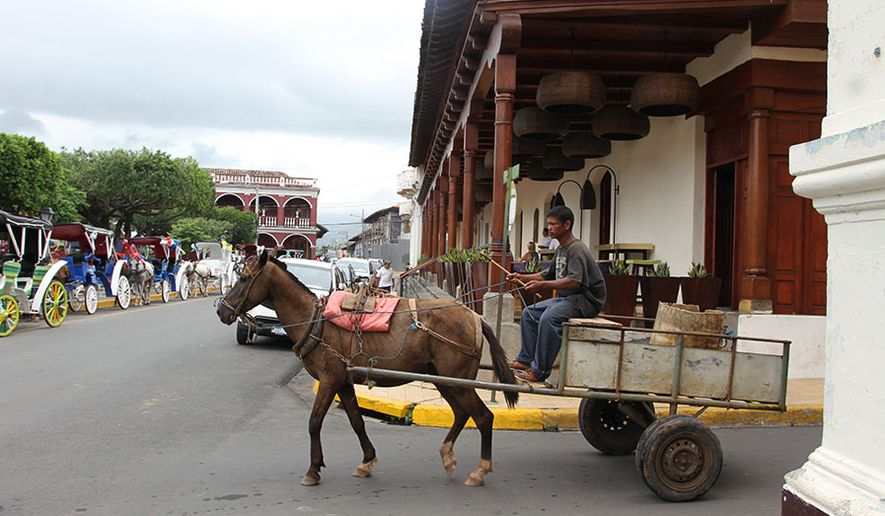
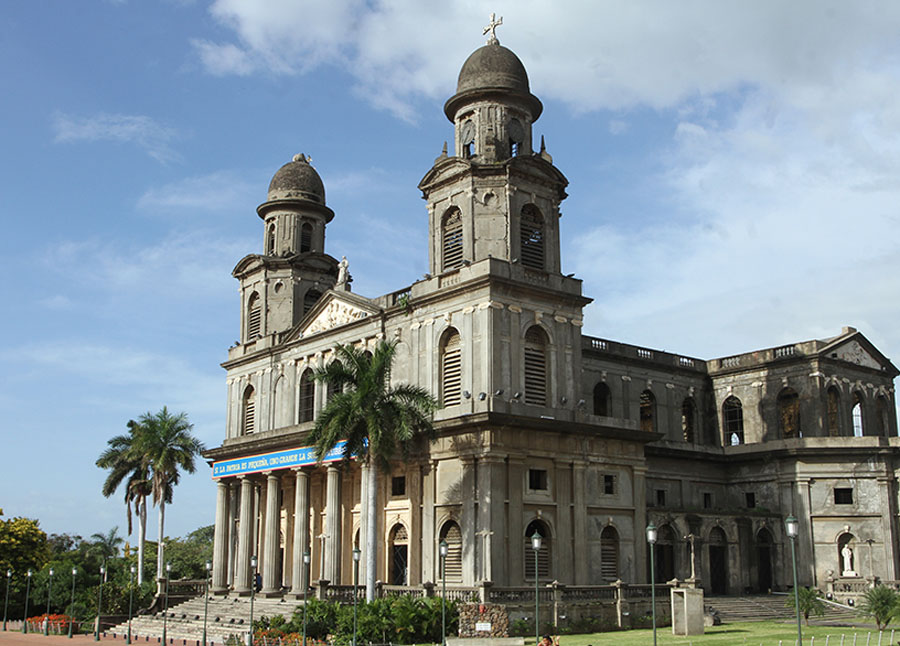
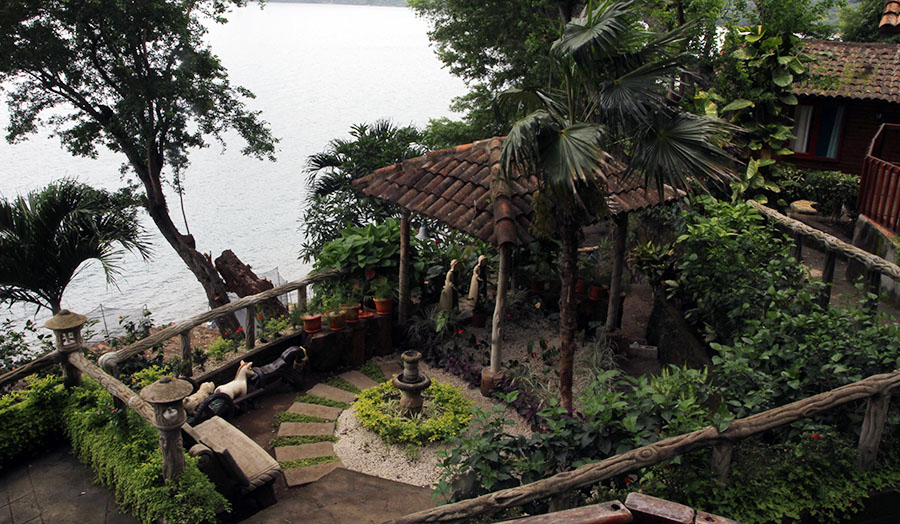
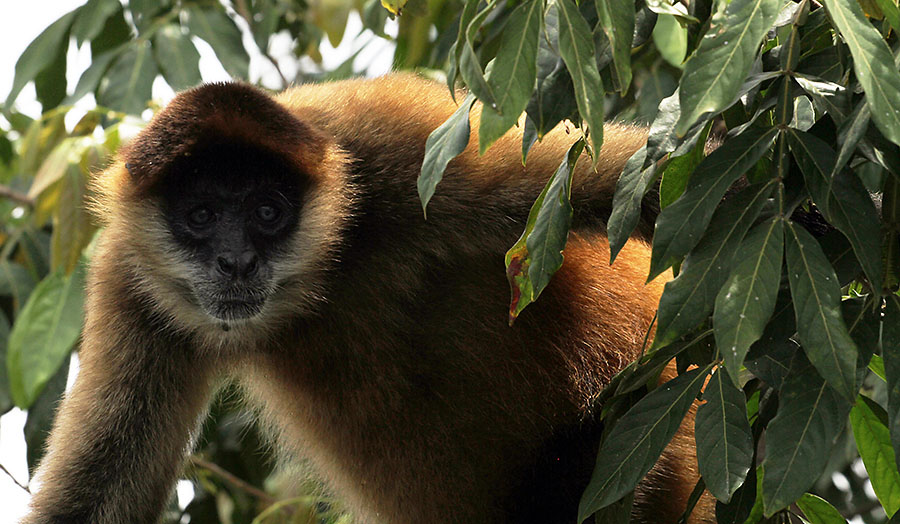
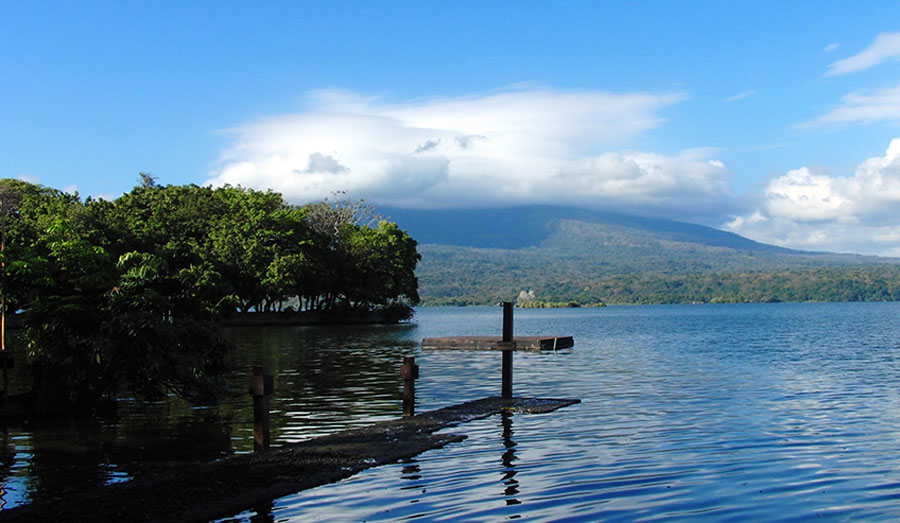
Please read our comment policy before commenting.